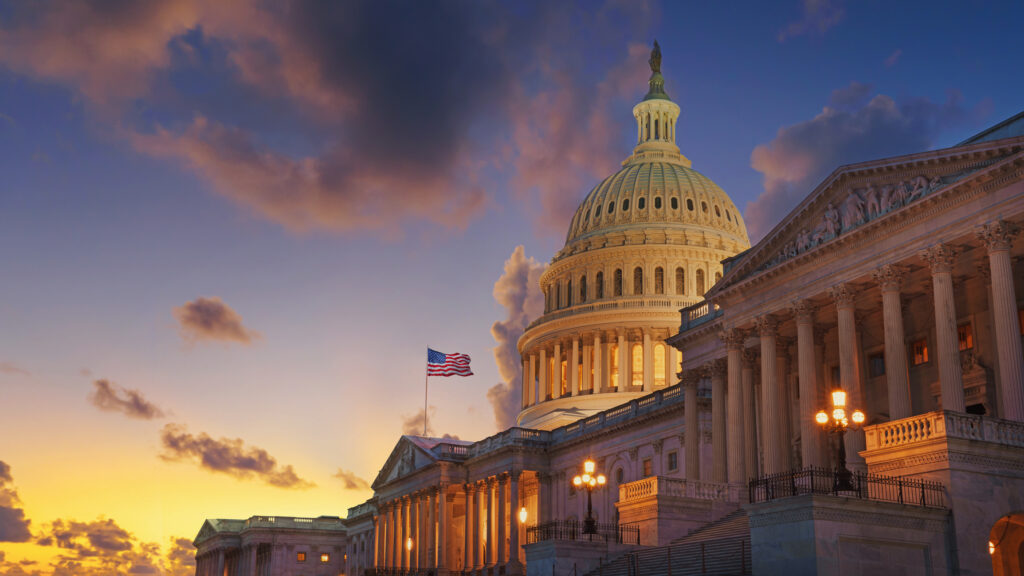Less than two weeks after the Florida legislature passed a statewide scholarship program, the Illinois House handed supporters of parental choice in education another victory by passing an education tax credit bill on a vote of 62 to 52. The measure had already won easy approval in the Senate two months earlier by a vote of 35 to 21.
GOP Governor George Ryan, who actively promoted the bill before the final House vote, made good on a campaign promise and signed the measure into law on June 3 at St. Stanislaus Kostka Catholic School in Chicago, sitting next to Francis Cardinal George.
“Fairness and opportunity means extending a hand to all of our kids, including those in private and parochial schools, and this bill does that by giving parents the ability to send their kids to the school of their choice,” said Ryan. “For lots of families, this credit will be the deciding factor in determining where their children will go to school and will give them a choice about where their children will learn.”
Over 321,000 K-12 students in Illinois are enrolled in private schools, including approximately 250,000 in Catholic schools.
Starting next year, Illinois families will be eligible to take a credit of up to $500 against their state income tax bill for 25 percent of the expenses they incur in educating their children at public, private, and religious schools. Eligible expenses include tuition, book fees, and lab fees, but the first $250 of these expenses is excluded.
“Illinois now joins Florida, which passed a statewide scholarship program at the end of April, in supporting a parent’s right to choose where their children will be educated,” said Joan L. McKinney of the Illinois Catholic Conference, which had lobbied strongly in favor of the bill.
In January, Catholic school officials from the Archdiocese of Chicago had warned they would close as many as eight grade schools this fall. Trying to keep tuition affordable for low-income families but facing an annual $52 million operating deficit, the officials called on Illinois state legislators to find a way to make private schooling more affordable, either through school vouchers or income tax credits. Here, they echoed the recommendations of a December 1998 report of the Special Task Force on Catholic Schools in the Chicago Archdiocese.
Cardinal George said then that “it was unrealistic to maintain the system we have now” without additional funding, but he also noted the state would have to come up with $1 billion a year in additional funding to absorb students served by the Archdiocese’s schools. Governor Ryan acknowledged this economic benefit of private schools to the state.
“Parents who spend money on private schools end up saving other taxpayers thousands of dollars,” Ryan noted, “because, if those more than 300,000 children now enrolled in private schools showed up at local public schools, the costs to public schools would be extensive and the schools couldn’t handle the sheer numbers of students.” The tax credit, he said, “takes nothing away from Illinois public schools.”
Also, the legislature had taken care of public schools first by providing them with an additional half-billion dollars in state funding, noted Senator Dan Cronin (R-Elmhurst),chairman of the Senate Education Committee. He has argued that “there is a legitimate public policy interest in ensuring the viability of the Chicago Catholic school system.”
The views of Ryan and Cronin carried little weight with the Illinois Education Association, which announced its intention to file a lawsuit challenging the tax credit bill on constitutional grounds. Calling themselves “advocates for public education,” the IEA characterized the bill’s approval as an “attack” on public schools by those who did not share the teacher union’s “values, principles, and devotion to quality public education.”
Representatives of the Institute for Justice, a Washington, DC_based law firm that is defending school choice programs nationwide, saw things differently.
“This kind of reform fundamentally shifts control over a child’s education away from teachers’ unions and puts it back where it belongs–in the hands of parents,” said Matthew Berry, an Institute for Justice attorney. “We fully expect that this program will be challenged in court by the usual suspects aligned against meaningful education reform. We look forward to representing Illinois parents and taxpayers should a suit be filed.”
The teacher union contends the tax credits are an unconstitutional use of “public money,” but their arguments may be difficult to sustain in court. Tax deductions for education expenses in Minnesota were ruled constitutional by the U.S. Supreme Court as long ago as 1983, even though most parents used them to defray costs at religious schools. More recently, an attempt by the Arizona teacher union to differentiate between tax deductions and tax credits for education was thrown out by the Arizona Supreme Court earlier this year, with the court ruling that tax credits and deductions were not “public money.” (See “What’s ‘Public Money’?” School Reform News, March 1999.)
The primary House sponsor of the Illinois education tax credit legislation was Democrat Kevin McCarthy. As a freshman legislator in 1997, McCarthy had introduced a similar tax credit bill that passed both chambers only to be summarily vetoed by then-Governor Jim Edgar.
A key difference between the earlier bill and the one signed by Ryan is that a refundability provision–making the credit available as a tax refund to low-income families who pay no state income taxes–was removed from the current measure.
If parents could claim the tax credit for every child in Illinois private schools, their annual tax savings would be $160 million. But with the credit limited to a maximum of $500 for each taxpaying family, actual savings are estimated to be at most $50 million to $60 million.
George A. Clowes is managing editor of School Reform News.




